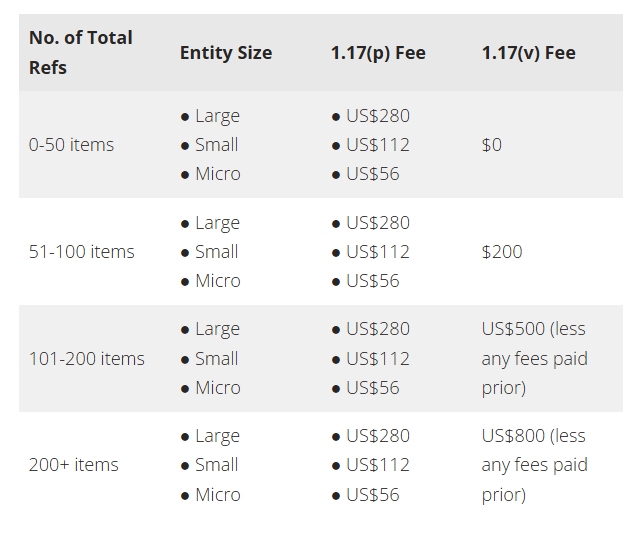- within Insolvency/Bankruptcy/Re-Structuring and Immigration topic(s)
On 19 January 2025 the USPTO enacted a new Information Disclosure Statement (IDS) size fee. A new IDS size fee, codified under 37 C.F.R. 1.17(v), is accrued for any pending application when the number of cumulative references cited by the applicant exceeds each of 50, 100, and 200 references (hereinafter, "IDS Size Fee").
New IDS Filing Fees
The IDS size fee relates to how many references have been filed through the entirety of an application's prosecution. Note that the IDS Size Fee does not affect the previously-existing IDS filing fee under 37 C.F.R. 1.17(p). Thus, applicants are now required to pay fees associated with both 37 C.F.R. 1.17(p) and 37 C.F.R. 1.17(v) when filing an IDS.
The below table summarizes IDS fees based on total number of references cited by the applicant, timing of filing, and entity size.

The IDS Size Fee is a cumulative total such that if two thresholds are surpassed with the filing of one IDS, the fee at the higher threshold is due at the time of filing. However, because the fee is subtracted from any previous fees paid under 37 C.F.R. 1.17(v), prorated payments at higher thresholds do not impact the total amount paid under 37 C.F.R. 1.17(v) through the prosecution of the application.
Applications Filed Prior to 19 January 2025
The new IDS Size Fee is not applied retroactively to previously disclosed references. However, applications pending prior to 19 January 2025 are subject to newly-incurred fees if an IDS is subsequently filed citing references in excess of 50, 100, or 200 references.
Counting References
The total number of references can be counted according the following guidelines:
- Court all reference cited in all IDS filings: The total number of references include all references cited in previous IDS filings associated with the application.
- Court duplicate references: A reference is counted each instance that it appears.
- Do not count references cited in IDS filings in parent applications: The USPTO has indicated that references cited in IDS filings in parent applications do not count towards the total number of references cited in a child application.
New Required Written Statement
Applicants must now file an "IDS Size Fee Assertion" written statement when filing any IDS. The statement must indicate that (1) the IDS is accompanied by the appropriate IDS size fee; or (2) no IDS Size Fee is required. Patent Center recommends applicants use SB/08-Patent Center for IDS submissions which is a comprehensive form that allows applicants to cite documents and pay necessary IDS fees. Alternatively, a new form, SB/08c, can be filed which allows applicants to only select the appropriate IDS size fee assertion and pay IDS size fees.
Special thanks to law clerks Becca Fauver and Kahlan Noel for their contributions.
The content of this article is intended to provide a general guide to the subject matter. Specialist advice should be sought about your specific circumstances.





